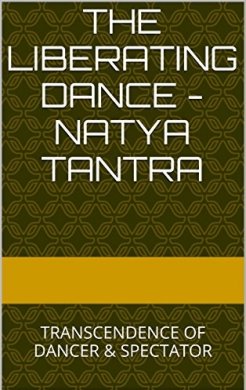
|   |

|   |
|
The liberating dance - Natya Tantra - S.V. Indu e-mail: svindu86@gmail.com October 15, 2016  ‘The liberating dance - Natya Tantra’ is an erudite exposition on the
subject of Natyam as a meticulously designed tool that enables its
practitioner to be truly spiritual. Appropriate illustrations and a rich
bibliography at the end make this profound subject a comfortable read
and conducive even for non-dancers. The author Dr. Padmaja Suresh
(Director, Aatmalaya Academy, Bangalore), places an overview of Tantra
and Natya in the beginning chapter. It explores the fundamental
principle of Tantra Sastra through the works of Dattatreya and the
essence of other Tantric treaties like Anukaranasabdasastram,
Chitrakarma, Sivaswarodayam etc. apart from also understanding the
significance of Natya as a consecration process. ‘The liberating dance - Natya Tantra’ is an erudite exposition on the
subject of Natyam as a meticulously designed tool that enables its
practitioner to be truly spiritual. Appropriate illustrations and a rich
bibliography at the end make this profound subject a comfortable read
and conducive even for non-dancers. The author Dr. Padmaja Suresh
(Director, Aatmalaya Academy, Bangalore), places an overview of Tantra
and Natya in the beginning chapter. It explores the fundamental
principle of Tantra Sastra through the works of Dattatreya and the
essence of other Tantric treaties like Anukaranasabdasastram,
Chitrakarma, Sivaswarodayam etc. apart from also understanding the
significance of Natya as a consecration process. In the second chapter, the ground for appreciating the relationship between the two is prepared by drawing parallels between the esoteric mudras of Tantra and aesthetic hastas of Natyam, chakras of the Suksma sarira (subtle or astral body) and the practice of 108 karanas of the Natyasastra and finally, navarasas and their relationship to the chakras. The next chapter throws light on the Yantra sastra and the stances, postures and formations incorporated in Bharatanatyam. Here, Sri Yantra is described as a ‘cosmogram’ and the cosmic dance of Nataraja as a representation of the rhythmic movement of the entire cosmos. The thoughts of the six schools of Vedic philosophy and Vedanta are explored and the Upanishadic Tantra in Natya assessed in the fourth chapter. The competence of the author in treating this difficult subject lucidly is evident as she arrives smoothly at saying, “Advaita, true Santam, resting in monism can be the ‘end’ indeed where there cannot be any mundane expression but Natya in order to carry the dancer and the spectators, has to be thoroughly expressive and appear world-related…. Witnessing all these ephemeral states is the ‘mystical eye’ that can make one see the divine reality in the dance as infinite cycles of creation, sustenance and destruction….” In chapter five, Tantra of deities in dance brings forth the indispensable relationship between each of iconography, Silpasastra and Chitra with Natyasastra. The enriching explanations on Shaiva-siddhanta and the iconography of Lord Nataraja aggrandize the perception of the reader. Tantra and Rasa, Rasa in Abhinavabharati and Vijnyanabhairavatantra, Trika system/ Kashmir Shaivism and Prana or the vital energy are the topics of discussion in the sixth chapter. It concludes to say that “All three - poet, actor and spectator - in the serene contemplation of the work of art, form in reality, a single knowing subject, merged together by the same sensations and the same purified joy.” The sound-locus of Veda and the throb-vibration of Tantra is the next chapter of discussion. The significance of sound as the basis of all creation is elaborated along with the parallel states of supreme consciousness in Nada Yoga as well as the music of Natya Yoga. The final chapter Mukti or liberation brings forth that music and dance possess the tantric quality of tapping energy sources. The reader cannot but agree with the author’s conclusions here about the positive effects of natya and its yogic nature. The book for sure provides the dancer/seeker a wider perspective to intensify the dance experience, and the non-dancer an opportunity to appreciate Natya Tantra as an invaluable asset to humanity especially in today’s times. Format: Kindle edition File Size: 4298 KB Print Length: 82 pages Publisher: Aatmalaya Academy of Art and Culture Trust (4 May 2016) SV Indu, disciple of Shobanaa Bhalchandra, is a Doordarsan graded Bharatanatyam artiste. She has a Masters in Fine Arts (BN) from Bharatidasan University. She is a student of Hatha Yoga and has undergone training in karanas. She is the faculty for Bharatanatyam at Indiranagar Sangeet Sabha, Bangalore. Post your comment Unless you wish to remain anonymous, please provide your name and email id when you use the Anonymous profile in the blog to post a comment. All appropriate comments posted in the blog will also be featured in the site. |